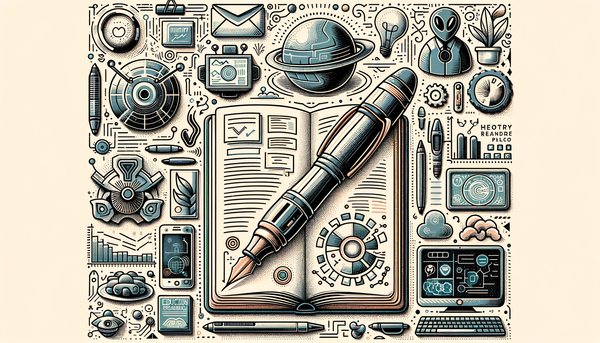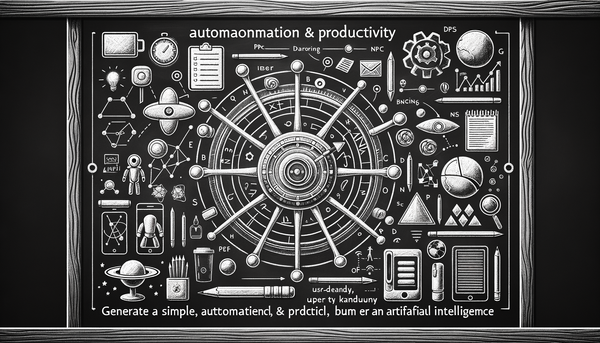Navigating the Multi-Dimensional Landscape of AI
Silicon chips carry more than electrical impulses—they carry a promise of unity and transformation across societies, industries, and daily life. Today’s AI landscape is not merely a technical evolution but a multifaceted revolution touching everything from conflict resolution to cybersecurity, healthcare, and creative digital tools.
AI as a Catalyst for Societal Unity
Across a divided global arena, AI is emerging as a potential bridge between conflicting ideologies. One perspective envisions a future where digital mediation transforms bitter disputes—whether in politically charged regions or culturally fractured communities—into platforms for common aspirations. The idea is simple yet profound: shift the dialogue away from a win-lose binary and instead center it around shared dreams like safety, health, and mutual prosperity.
This optimistic vision was articulated in an insightful opinion piece discussing whether AI might ease conflicts in Israel. The argument posits that the very structure of many political debates has been limited by outdated perspectives. If political factions were to redirect their focus from exclusionary debates to a vision where all parties could embrace a collective future, the groundwork for genuine unity might be laid. By reframing conversations to prioritize what everyone can gain, emerging technologies could help mend long-standing divisions.
This approach not only reimagines conflict resolution but also suggests that technological advances could eventually be harnessed to overhaul governance models. Imagine a scenario where territorial disputes shrink in relevance because communities choose their leaders based on shared values instead of geographical divides. As one expert noted, an aspiration for collective improvement in health and safety could influence very tangible changes in social structures.
For those interested in a broader look at this transformative potential, our in-depth exploration in The Multifaceted World of AI: Innovation, Caution, and the Future expands on how technology and human insight can coalesce into revolutionary societal change.
Cybersecurity in the Age of AI
In parallel to its transformative social role, AI is revolutionizing cybersecurity—a domain where the stakes are exceptionally high. The rise of AI-driven security tools has equipped professionals with unprecedented capabilities to detect vulnerabilities, predict potential threats, and respond swiftly to emerging risks. However, this revolution is not without its challenges. As defenders harness AI to bolster their security frameworks, adversaries are leveraging the same technologies to develop more sophisticated attack vectors.
Prominent security leaders have underscored the importance of maintaining robust protocols, such as zero trust architectures and multi-factor authentication, as the digital battlefield evolves. Countries and organizations are now locked in a strategic dance, balancing innovation with the imperative to secure existing systems. This delicate balance between embracing cutting-edge defenses and safeguarding the integrity of current infrastructures reflects a larger theme in the AI revolution—innovation must be tempered with responsibility.
One memorable reflection came from an industry expert during a major cybersecurity conference in Singapore, who remarked,
“We are entering an era where the agility of our defenses must match the sophistication of our adversaries.”
His words serve as a reminder that caution and collaboration are essential. Governments are also stepping up by creating frameworks that encourage proactive intelligence sharing, ensuring that no single entity bears the burden of an ever-shifting threat landscape.
For a deeper dive into how AI is reshaping cybersecurity and urban innovation together, readers may find our feature on AI's Multifaceted Revolution: From Data Discovery to Cybersecurity and Beyond particularly enlightening.
Everyday Tech Enhanced by AI
The AI revolution is not confined to high-stakes business or international politics—it also touches our daily digital interactions. Take for example Opera’s pioneering step in integrating its Aria AI assistant into the Opera Mini browser for Android. This move is a game changer for users in regions with constrained data plans and older devices, offering seamless navigation combined with real-time updates and intuitive assistance. Opera’s adaptation ensures that users can experience the cutting edge of AI without the typical overhead of data or device limitations.
Furthermore, in an era where content is king, Google has pushed boundaries with innovative tools like Veo 2, an AI-driven video generation tool. With Veo 2, crafting an 8-second visual narrative from a simple text prompt becomes an accessible art form. Whether it’s a playful scene featuring whimsical animals or a dramatic reimagining of a sci-fi adventure, these tools lower the barriers for creative expression. Not stopping there, Google’s Whisk Animate tool breathes life into static images, allowing users to animate visuals and create engaging content with minimal effort.
I recently experimented with these AI-powered tools, and my first-hand experience was nothing short of exhilarating. The ease with which a creative idea can be transformed into engaging motion graphics opens up exciting avenues for digital marketers, small businesses, and content creators. These advancements exemplify how AI is democratizing technology—and ensuring that powerful creative tools are in the hands of everyday users.
For further exploration on integrating AI into general use and mobile technology, check out our discussion in Navigating the Dynamic Landscape of AI: Cybersecurity, Urban Innovation, and Everyday Integration.
Economic and Regulatory Tensions in AI Hardware
The integration of AI into various sectors is rapidly advancing, yet the underlying infrastructure faces significant regulatory and economic challenges. Companies like Microsoft have maintained a reputation for stable and innovative offerings, especially in AI-powered cloud solutions and productivity tools. Their relative resilience amid market volatility is a testament to the robust framework supporting their AI initiatives, even as global pressures and rising costs make investors increasingly cautious.
In contrast, semiconductor giants such as Nvidia have been dealing with the harsh realities of geopolitical regulations. Recently, Nvidia reported a dramatic $5.5 billion hit in revenues due to tightened U.S. export rules on AI chips destined for China. This pivotal development not only sent ripples across the semiconductor landscape but also underscored the clash between technological prowess and national security imperatives.
These export restrictions are part of a broader strategy to stem the migration of critical technologies to rival nations. As the U.S. tightens its grip, companies and investors alike are forced to weigh the balance between innovation and international regulatory compliance. This tension highlights an emerging narrative: while the future of AI is brilliant and boundless, the path to that future is fraught with challenges that demand careful navigation.
For those keen to understand the interplay of corporate strategy and regulatory pressures, our comprehensive piece on AI: A Convergence of Innovation and Caution offers additional insights into how industry titans are adapting in these turbulent times.
Transformative Impacts of AI in Healthcare and Personal Finance
Beyond the corporate and technological battlegrounds, AI has also left a transformative mark on healthcare and personal finance—two sectors that profoundly affect everyday life. In the aftermath of the COVID-19 lockdown, AI's role in healthcare has been nothing short of revolutionary. The ability to analyze vast amounts of data in a matter of seconds has allowed for improved disease forecasting, early detection, and more personalized treatment protocols. Governments and healthcare providers are now better equipped to manage public health crises, thanks to AI-driven precision and foresight.
Moreover, AI's capability to sift through and verify information in real time has played a critical role in mitigating the spread of misinformation—a problem that became particularly acute during the pandemic. The integration of AI in public health not only streamlines crisis management but also builds a foundation for a more resilient system in the future.
The innovative potential of AI does not stop at healthcare. With the discontinuation of widely used tools like Mint, numerous budgeting and financial management apps have emerged to address the evolving needs of consumers. Apps such as Quicken Simplifi, Monarch Money, and Copilot Money are redefining how we manage our finances by merging intuitive design with sophisticated analytics. These digital tools help users track spending, forecast budgets, and ultimately take control of their financial destinies. The diversity in features—from real-time transaction visualization to deep data reporting—underscores the adaptability of AI in responding to real-world challenges.
This convergence of AI in health and finance embodies the broader trend of technological integration across all aspects of our lives. Both sectors, while distinct in their functions and objectives, share a common aim: to empower individuals with better tools for decision-making. As these technologies mature, expect even more cross-sector innovations that will benefit society as a whole.
Looking Forward: The Interconnected Future of AI
The current landscape paints an inspiring picture of transformation and momentum. AI is not confined to a single domain but is a pervasive force that interconnects diverse industries and societal dimensions. As we witness breakthroughs in cybersecurity, everyday applications like enhanced browsers and creative tools, as well as strategic initiatives reshaping global tech policies, it becomes evident that AI is much more than a technological marvel—it is a fundamental reshaper of our future.
Reflecting on this journey, I am reminded of Fei-Fei Li’s forward-looking insight:
“If our era is the next Industrial Revolution, as many claim, AI is surely one of its driving forces.”
These words encapsulate the spirit of modern innovation where challenges and opportunities walk hand in hand. The successes in healthcare, personal finance, creative industries, and even global politics testify to AI’s potential to drive progress when aligned with informed decision-making and ethical considerations.
Looking ahead, one of the most exciting prospects is the potential for even broader collaboration. Imagine a world where AI not only serves individual interests but also acts as a conduit for cultural, economic, and technological integration. This is the promise of our interconnected digital future. Initiatives in data sharing, cross-border regulatory adaptation, and even creative experiments in digital storytelling all point toward a unified vision where technology is a cooperative partner rather than an isolated tool.
It is worth noting that while industries continue to innovate and push boundaries, the human element remains central. Our shared experiences, artistic endeavors, and collective aspirations feed the very algorithms that drive tomorrow’s breakthroughs. In this way, AI is both a mirror and a roadmap to our future—a future where technology complements the human spirit in its quest for a better, more integrated world.
Further Readings
For readers interested in exploring more about the diverse applications of AI and its implications across various sectors, consider visiting:
- The Multifaceted World of AI: Innovation, Caution, and the Future
- AI's Multifaceted Revolution: From Data Discovery to Cybersecurity and Beyond
- AI: A Convergence of Innovation and Caution
- Navigating the Dynamic Landscape of AI: Cybersecurity, Urban Innovation, and Everyday Integration
Final Thoughts
As we stand at the intersection of innovation and responsibility, the story of AI is far from complete. With every breakthrough, from unifying societal conflict to redefining our digital experiences, AI continues to chart an unpredictable yet immensely promising course. Its journey, rich with challenges and triumphs alike, invites each one of us to be a part of shaping a future where technology acts as a true partner to humanity.



